The floors you choose really create the atmosphere in your home and give it its identity. The first considerations should be to choose a durable and non-toxic floor to ensure safe indoor air quality (IAQ). When you are making choices, find out the estimated lifespan and what maintenance is required to keep it in good condition.
Just a note, when you read 'FSC wood', that refers to Forest Stewardship Council, an international certification program that promotes the sustainable and responsible harvesting of wood. Choosing FSC products promotes the market for responsible forestry management.
Engineered hardwood floors:
Engineered wood is comprised of several layers of plywood forming the core of your flooring, with a top layer of hardwood. When finished, engineered wood will look like any other hardwood floor.

Pros: Solid and stable; relatively good soundproofing; looks like any hardwood floor; helps reduce demand on forests by using leftover scraps of wood in the laminate core.
Cons: It will often contain volatile organic compounds (VOCs) in the lower layers; less durable than a floor made of solid wood only.
Worthy of note: Engineered wood floors lend themselves well to in-floor radiant heat.
Solid hardwood floors:
Wood flooring can come either raw or pre-finished. Traditional raw wood flooring usually requires as much work in finishing as it did to install and that’s certainly true if you finish it with polyurethane.

After installation you will need to sand it and for a nice finish that can take a lot of time. This is something you can do yourself. You can rent a sander from most big box supply stores.
Pros: You can usually find local and FSC woods; wood floors are natural looking and can be quite durable.
Cons: They will get scratched, there is no way around that, but less so with harder woods like maple or oak. Pine for example is very soft and will unquestionably pick up dings and scratches through normal wear and tear. Wood floors are susceptible to UV rays and will start to yellow over time; they can leave colour variations around furniture and area rugs that don't move
If you choose to oil your floors rather than using polyurethane, they will be much more easy to repair and can leave you with a much healthier final product.
Solid pine floors:
Pine is a fairly common flooring, but more often found in custom homes in rural areas for some reason. Maybe that rustic lifestyle makes you less concerned about a few scratches, who knows. Scatches are certainly what you will get with pine floors, particularly if you have kids or dogs.
Pine is soft wood, so it is more prone to damage than hard wood floors. It is more affordable than hard wood flooring to install, but will probably need maintenance much sooner than a hardwood like oak or maple, so it is worth considering the long term costs.

Pros: Pine flooring is cheaper than hardwoods and is most likely local wherever you purchase it in Canada. It is a beautiful wood with a lot of character and a warm tone. You may not think it makes a difference, but it is actually a bit easier on the feet than harder floor surfaces, even just harder species of wood.
Cons: It scratches much easier and requires maintenance and refinishing much sooner than a hardwood floor.
Reclaimed wood flooring:
Depending on your taste and what you do with it, reclaimed wood can give you a floor with a lot of character. You can find and reuse old flooring, even use old barn boards for a beautiful and rustic look. Barn boards are usually much wider and have a rich colour and history.
Below is a floor covered with 90-year-old red pine that was reclaimed during a renovation. Re-using flooring material is more challenging to work with than newly milled wood, and how well it goes together a second time is largely dependent on how carefully it was disassembled.

If you pull flooring up carefully by prying pieces up where they are nailed and take care not to break the tongues and grooves, it often goes very smoothly. They will need to be cleaned, and probably planed or at least sanded depending on what coatings they had on them. This floor had several coats of paint (no doubt containing lead), so it was planed outdoors, and then sanded after installation and sealed with a non-toxic natural floor oil.
A down side to using old flooring is that it can be harder to get the boards tight together, and spaces between boards can be a pain for cleaning as they build up dust and debris very easily.
Wood salvaged from River bottoms:
Under the category of 'reclaimed' I would include wood reclaimed from rivers and lakes. Transportation of logged wood in previous centuries was often by waterways, and much of it sunk. There are salvage companies that dive down and pull these trees up, and mill them into finished wood products.

Being submerged in deep water can actually benefit wood. Low levels of oxygen reduces the rate of rot and the water pressure forces the sap out of the trees. It seems counterintuitive, but wood that has been submerged in water often for hundreds of years is considered to be of superior quality with richer colours than wood straight out of a forest.
When it comes to finishing and maintenance, treat sunken timber as you would any other hardwood or softwood.
Bamboo floors:

Though it is often thought to be wood, bamboo is actually a fast-growing grass that needs no pesticides or fertilizers. Bamboo plantations provide bird and insect habitat and have a turnaround time of 5 years from planting to harvesting.
Pros: Bamboo is renewable; sustainable; very strong; durable and antimicrobial. It's now available as FSC certified as well as formaldehyde-free for better interior air quality..
Cons: It has a sizable carbon footprint since it comes from Asia, and there have been questions raised regarding working conditions for those in the industry.
Cost: Between $3 and $8 per sq.ft.
Cork floors:

Cork is another durable and renewable flooring material. Cork is harvested from the bark of a specific oak tree, so the tree itself is left alive. Cork flooring products will often contain recycled content from exactly where you would guess — wine bottle corks. Finish it the way you would a wood floor, and it will require about the same maintenance. See our DIY Cork Flooring video building guide to learn about cork floor installation.
Pros: Natural air pockets make cork soft, well-insulated, and give it excellent acoustic properties for absorbing sound. As a finished flooring product it brings a very unique and warm feel to a home.
Cons: The core is often made from a high-density fibreboard, so if you don't specifically source non-toxic brands, you will likely find it contains VOCs. It doesn't grow in North America; however, being lightweight and a renewable material keeps allows it under the 'umbrella' of what we consider a 'green' building product.
Cost: Between $5 and $10 per sq. ft.
Linoleum / Marmoleum:

It's hard not to think of an old 50's kitchen when you think of linoleum, but in reality it comes in some pretty nice styles and colours and can actually be an environmentally responsible flooring choice. Linoleums can be made from renewable materials including solidified linseed oil, calcium carbonate, cork dust, wood chips and burlap to name but a few.
Pros: Very durable; good ones can be natural, anti-allergenic and anti-bacterial. Be sure not to confuse them with vinyl tiles.
Cons: It comes in rolls, and due to colours and patterns, they will usually need to be installed by a specialist.
Cost: Between $5 an $12 per sq.ft.
Polished concrete floors:

Concrete production releases a lot of greenhouse gases, but the finished product is incredibly durable and non-toxic to humans. Floors can be acid stained, have colours added, and have patterns cut into it to make it look like tile or stone.
Pros: Excellent thermal mass; as durable a floor as you will ever find; excellent medium for radiant floor heat; almost all homes will have a concrete floor if not as the main floor, certainly as a basement, and polishing an existing floor is among the cheapest finished floors you can get.
Cons: High GHGs during production; concrete itself it is very durable, but any glass you drop on it won't be; it can be pretty unforgiving to kids that wipe out on it; standing on concrete can be tough on your joints so it's a good idea to have cushioned pads where you regularly stand for long periods of time like in front of the sink; verify that any finishes you intend to apply don't contain VOCs.
Cost: Can be as little as $2 up to $12 per sq.ft.
Slate floors and counters:

Slate is a natural stone, extracted from what was the bottom of ancient oceans, and can commonly be found from Quebec to Newfoundland. Finished floors generally have widely varying colours and texture. See our Natural Slate tile installation video building guide to learn more about choosing and installing slate tiles.
Pros: Excellent thermal properties for heat absorption; very durable; can be locally sourced in much of Canada.
Cons: They will require a sealer or finish when the stone is not polished so try to choose non-toxic finishes.
Cost: Starting around $4 but can go up to $25 per sq.ft.
Ceramic tiles:

Pros: Very durable and highly resistant to water; no adverse health effects, but make sure that the mortar and grout are low VOC.
Cons: Colours and styles change quickly, so you should keep a few extra on hand in case you need to replace a broken one because you might not be able to find it in the future. They have a significant embodied energy, and are mostly imported.
Cost: Anywhere from $3 to $12 per sq.ft.
Carpets:
With the exception of certain area rugs, we really aren't big fans of carpeting. While the industry has set itself on a course of cleaning up its emissions and reputation, overall it still has a poor environmental record in production, not to mention the effects of carpets on the air quality of our homes.
Your carpet can be a warehouse of dust, dirt, pet dander, bacteria, mold and mildew. It might get vacuumed regularly but the fibres will absorb and hold any airborne contaminants and chemicals used around the home, including actual carpet cleaners.
A handmade natural wool area rug is a nice compliment to a wood floor. It’s non-toxic and can be brought outside to clean.
Pre-finished wood flooring:

Flooring does come prefinished, most commonly found with polyurethane, but you can find pre-oiled floors as well. A lot of prefinished hardwood floors make for a really easy install, with tongue and groove ends as well as over the length, and a tiny chamfer cut on the top to avoid sharp edges.
This can be a great solution if you are installing a floor in an existing home to avoid the dust and fumes that come from finishing. Maintenance would be the same as any other wood flooring.
We recommend oils over polyurethane, whether the floor is prefinished or not. Oil won’t add pollutants to your home and it will enhance the natural beauty of wood. Oiled floors are much easier to maintain because you can quickly swipe a bit of oil on heavy traffic areas.
Polyurethane is by far the most common wood floor finish in North America, whereas in Europe floors are much more commonly oiled, so the durability is well established.
Be careful with oily rags. If balled up they can spontaneously combust and start fires so make sure they dry out properly.
Tropical woods:
In the modern age of resource depletion and environmental destruction, it's best if we avoid tropical woods altogether. We lose rainforests at a rate of approximately two acres per second, and we need them to survive. There are lots of local varieties of FSC certified woods that don't have the same devastating impact on the planet when harvested.


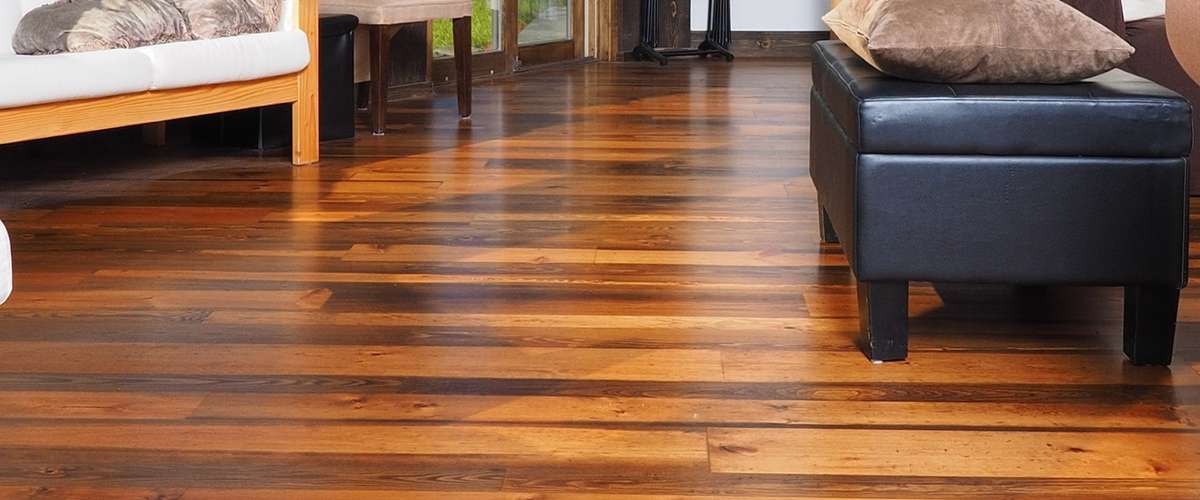













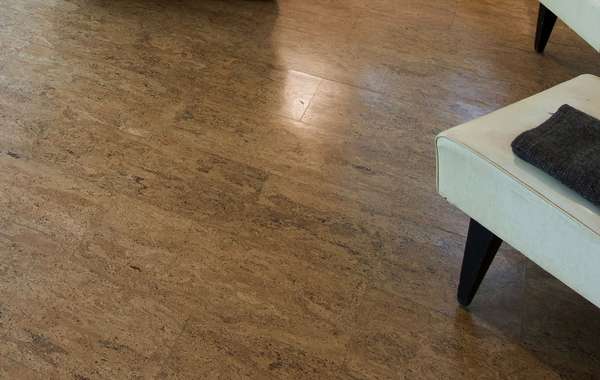
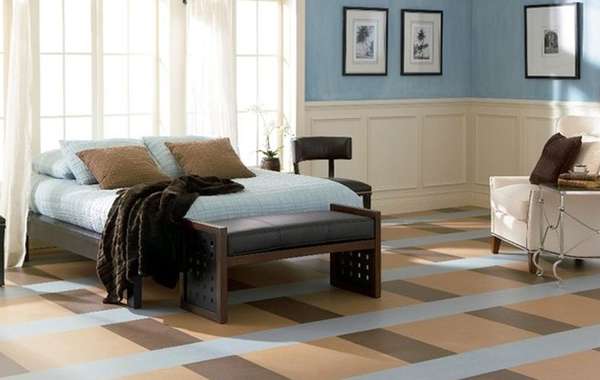
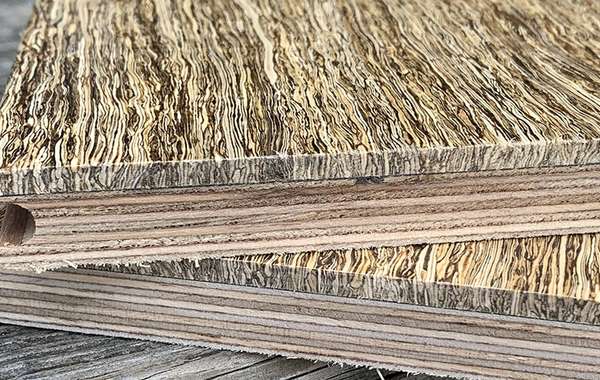
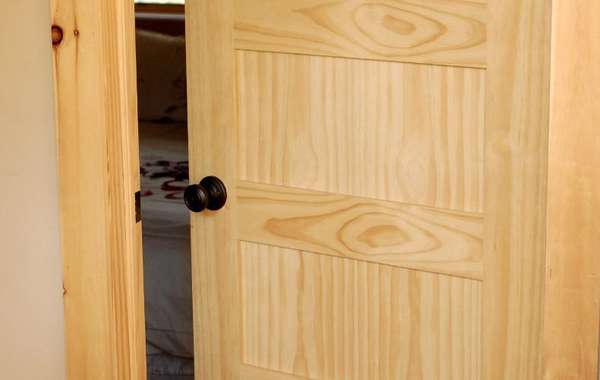
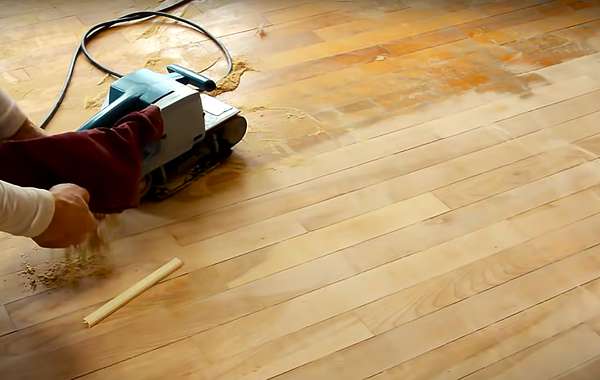
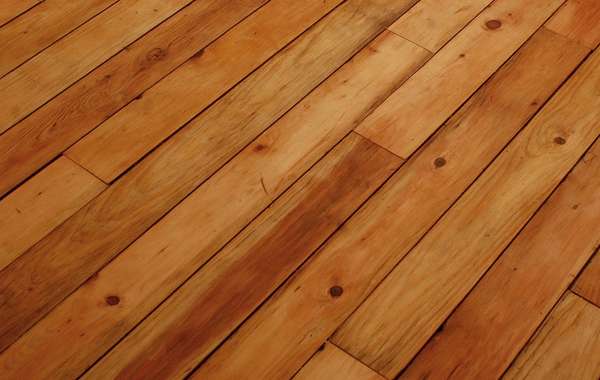
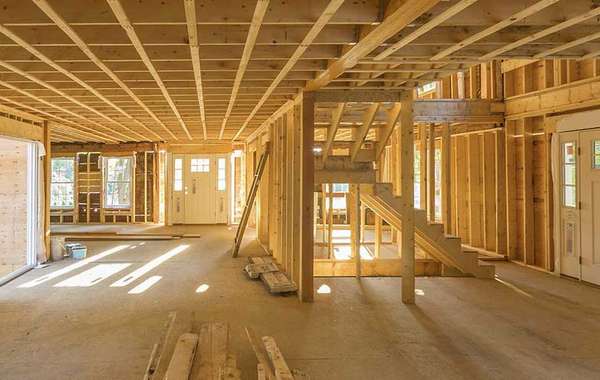
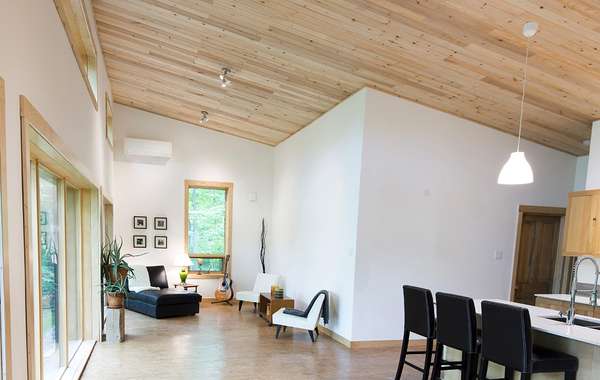
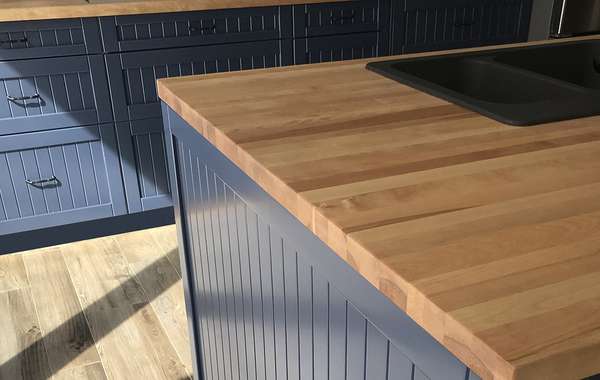
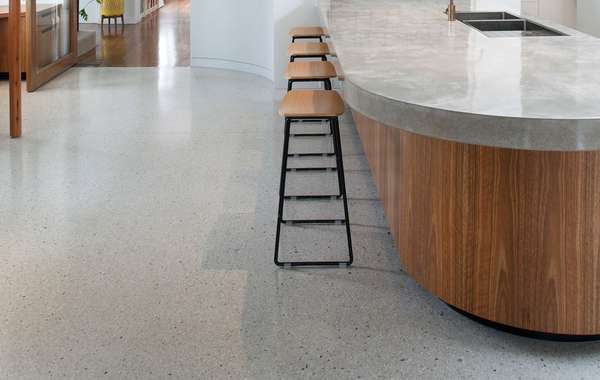

I clicked on that link to the non toxic concrete finish and since we recently did that I just wanted to offer a review of it. I recently built our second home with a polished concrete floor, the first had an epoxy finish that we didn't love that much, we tried a concrete densifier with the new one. It's been a year on it now and we're really happy with what we see so far. We will see how it goes over the coming years, but unless something happens I would for sure do this again if I had to.
Thanks Jack, your review is much appreciated. for others, here is the page about How to Seal and Polish Concrete Floors that Jack is referring too. In our opinion, a polished concrete floor with a non-toxic sealer is the most affordable, durable and healthy floor finish you can choose. Although, some people do find it a bit hard on the joints if you stand on it too long, so for us it would also come with area rugs and rubber matts in front of the kitchen sink and stove!
Are you saying hardwood floors are much better if they've been soaked in the water for over a hundred years?
Hi Ryan,
Regarding the reclaimed lumber from river beds, I wouldn't say 'much' better, but they are known to be a bit stronger and the colours are certainly more rich. You will pay a premium for it, so it's not necessarily for someone looking for the cheapest material. You pay extra for the colour, the environmental benefits, and to have a cool story to tell your dinner guests. Best regards.
I work in the industry and I've done a lot of varnished floors in my day and was always happy with the results, the natural oil I find interesting but is it really that more durable?
Hey Cosmo, the thing about the durability of natural oil floors is that it they are so easy to maintain that it will be a long time (if ever) before you need to do any major work that involves removing all your furniture and creating a toxic dust storm in your house. You can just hand sand it and apply a bit of oil in high traffic areas, so you can sort of keep it looking new indefinately with a bit of occasional maintenance. Having an old and damaged varnished floor in my own home I can say that I'm dreading the day when I finally get around to doing something about it. Because I know it will take getting a drum sander and stripping it down, at which point I will apply a natural oil. Here is another story and product we like you might want to check out - Natural Wood Finishing Oil for Floors, Counters & Decks - Food Safe!
A friend of ours has just come back from a flooring retailer with samples of "green" laminate flooring. A hardwood pattern printed on a board made of a sort of fibre-board. One brand is "Greenguard" certified, while the other is "Floorscore" ... which certification is better and which (if any) is suitable for an air-tight home? (0.6 ACH @ 50 Pa)
Hi Andrew, if we had to choose between those two certifications we would go with GREENGUARD. We can't speak too much to the credibility of standards of Floorscore as we aren't overly familiar (for or against), but GREENGUARD we are familiar with and it is a trusted certification in the industry.
And not that it something to always rely on, but if you do a google search of each name you will see that GREENGUARD returns over 3 million results while Floorscore is only a few hundred thousand.
Hello. Thanks for creating this article, it must have taken some time. One of my biggest obstacles right now is how can I ensure a safe floor for my infant and toddler , and we also have dogs. It seems these traits of toxin-free safety and preventing urine moisture spots don't mesh well. Wood is the safest but it also stains as the dog(s) will eventually go somewhere while unattended. We currently have a vinyl from Home Depot and tested it for phthalates and it passed. However, there are many others things I supposedly could test for I.e. lead, formaldehyde, etc. The best floor for us would be a safest possible floor but can clean up moisture. I've not had any luck finding a company to assist us in Canada as of now. Thanks for any advice. Michael in Winnipeg.
What do you guys think of Luxury Vinyl Plank (LVP) as an alternative to hardwood? Are there some good versions of it that are very eco-friendly and don't contain high VOCs?
Due to the huge environmental impact of vinyl (as it uses significant amounts of chlorine gas in manufacturing) we don't ever recommend it as a product. We would not consider it in anyway an 'eco-friendly' option for flooring. For something similar we would point you towards a greener option like Marmoleum flooring.
need to detoxify concrete polished floor on the ground floor of a two story structure. please advise and possibly refurbish the floors. Thank you,
Edeltraud Harzer
Hello. Just ran across this excellent flooring primer. I realize it's not recent but am hoping I can get a response.
I am looking for a safe, easy to install and budget-friendly option to cover small ceramic tiles on a bathroom floor. Most likely I will be doing the work so I am looking for something that is easy to handle and to cut. I was thinking of Marmoleum. Would that work on this kind of floor? If so, could you recommend a site/place to buy from online? I am in Puerto Rico, I don't think I would find it at stores here.
Thanks much!